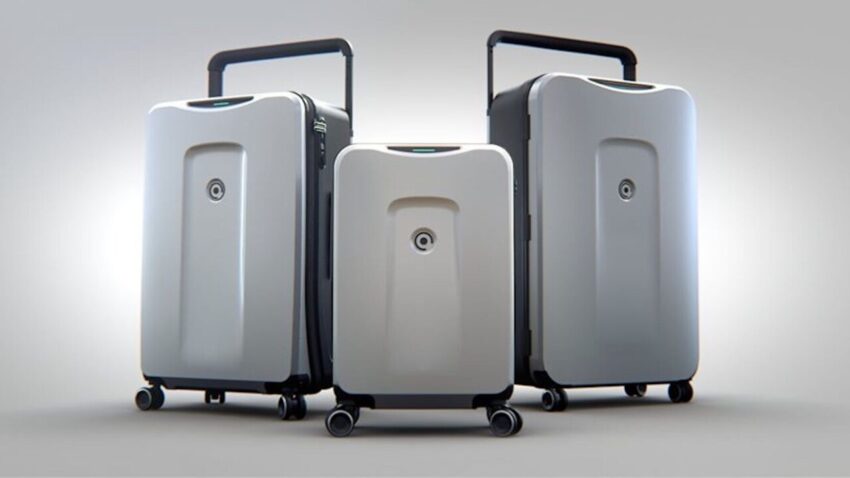From the massive oak trunks of the 1800s to innovative, lightweight, and advanced bags of the present, travel luggage has gotten more advanced. Long-lasting, durable, and practical luggage options are becoming increasingly important as the nature of travel and travel have changed.
This article will explore the way in which travel luggage has evolved through time and examine advances that have made travel practical and efficient for millions of travelers around the world.
1. Early Times: Heavy Trunks and Steamer Bags
In the 19th century, the majority of people traveled via train or by sea, and frequently carried everything they owned along. The trunks were large and made of leather, metal, and wood, were utilized for carrying luggage. They required servicemen or porters to carry the trunks as they were huge and heavy by modern standards.
The wealthy tourists traveled in elegantly made trunks designed to last the test of time. Companies like Louis Vuitton began as trunk manufacturers, producing stylish and durable items for the affluent. Even though they weren’t suitable for modern travel, these first designs set the standard for the design and craftsmanship of bags today.
2. The Shift to Cases
Travelers needed smaller, lighter luggage as air travel began to gain popularity in the latter half of the 20th century. In the end, the suitcase, which is a box-shaped object made of light materials such as plastic or cloth, was invented.
Suitcases are more suitable for use in vehicles as well as aircraft, and are efficient for short excursions. Most often, they came with the top handle and closures with zippers or clasps. A retractable handle, as well as two wheels, changed the look of luggage by the late 1970s. It made it easier to travel through airports and train stations.
3. The Rolling Baggage: An Innovation
A single of the significant advancements within the realm of travel bags was the invention the concept of rolling bags. The concept, first presented in 1970 by Bernard Shadow in 1970, included a draw strap as well as wheels that were attached to the bottom of the suitcase. It quickly gained attention and changed the flow of traffic at airports.
The pilot Robert Plath improved this design later in the 1980s, adding two wheels at one end and a telescoping hand, which resulted in the rolling suitcase we have today. The improved control was brought by this design, and it quickly established itself as the standard for the flight crews as well as leisure passengers.
4. Designs with hard shells and light-weight materials
The manufacturers of luggage started using lightweight materials such as ABS plastic, polycarbonate, and ballistic nylon after airlines started to enforce strict weight restrictions. These materials enhanced the ability of baggage to withstand the ravages of transportation and made it easier to carry.
Particularly, luggage made of a hard shell attracted attention due to its attractive design and protective features. Furthermore, it provides better protection for delicate items as well as water resistance. It is also a great choice for hard-sided bags, as travel is increasingly preferred by a lot of travelers for checked baggage as well as long-haul flights.
5. Compartments for expansion and spinner wheels
Four 360-degree spinning wheels have become the most sought-after feature of the modern luggage that allowing travelers to carry their bags effortlessly anywhere. Due to this innovation, navigating the airport is easier and less demanding on wrists and arms.
The movable section, which enables passengers to carry more items without having to carry a larger bag, is a further benefit. These innovations have enhanced the efficiency and ease of packing for all kinds of travel.
6. Smart Baggage: The Future of Travel
Smart luggage, which has modern technology, such as built-in GPS tracking that can locate lost bags, has been on the market for a couple of years.
- USB ports for mobile device charging.
Scales that weigh to check the weight of your bag while traveling, and digital locks to provide greater security.
Travel bags that are high-tech and designed specifically for the needs of today’s travellers are being developed by companies such as Blue Smart, Samsonite, and Away. Make sure you are aware of the regulations of your airline prior to leaving, but many have imposed restrictions on smart bags that contain lithium batteries that cannot be removed.
7. Sustainable & Eco-Friendly Travel Bags
A lot of companies are now offering bags made using recycled and sustainable materials due to an increase in environmental awareness. These options are less impactful on the environment, while remaining just as sturdy as traditional baggage.
Eco-friendly travel equipment, like bags made out of recycled plastic bottles or biodegradable fabrics, allows travelers to make smart choices without compromising functionality or quality.
8. Customization and Design
Apart from being practical, the latest equipment for travel also creates a fashion statement. There are a variety of designs, colors, and personalization options that are that travelers can choose from. Apart from making luggage more easily identifiable, monogramming, reversible covers, and distinct designs allow customers to express their individual fashion.
Conclusion remarks
Because of changes in demand for passengers, technological advancements, and methods of transport, the baggage for travel has experienced substantial changes over time. Each new period has brought fresh technologies that have enhanced the comfort and efficiency of travel, from large trunks to fashionable, elegant bags.
We can expect some more exciting advancements in the design of baggage as the world keeps changing. There’s the perfect luggage for everybody, regardless of what you prefer in terms of smart design, eco-friendliness, fashion, or security. Recognizing this trend allows us to appreciate the comfort we have today and anticipate the future of the world of travel.
